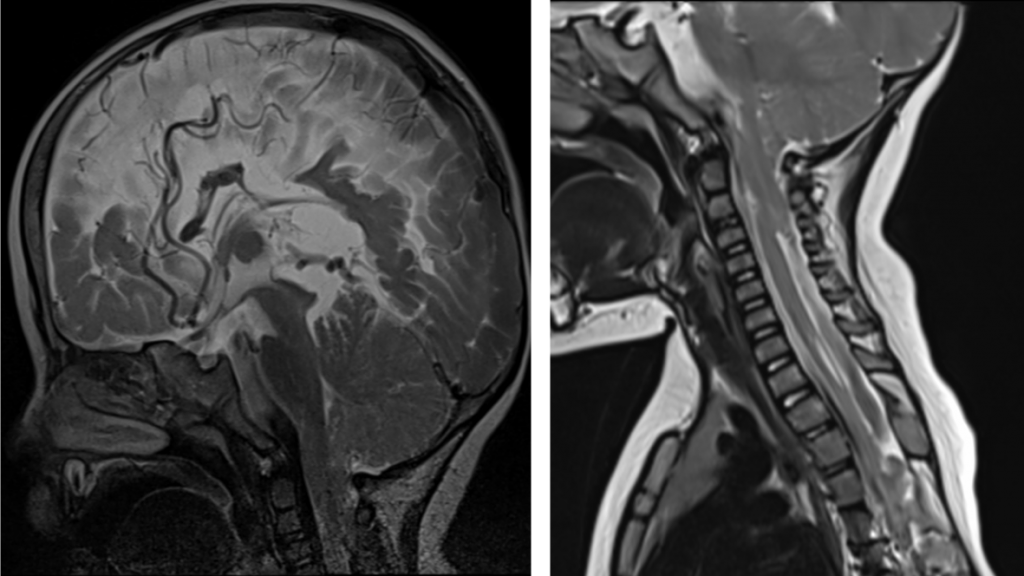Clinical:
- A 13 months-old boy
- Previously diagnosed spina bifida with meningocele
- Underwent repaired ruptured myelomeningocoele at Day 2 of life.
- VP shunt inserted at 1 month-old.
- MRI on Day 2 of life revealed Arnold Chiari II malformation.
- Currently, patient has poor head control & gross motor delay.
- Speech is appropriate for age.



MRI findings:
- There is partial agenesis of the corpus callosum. Only the genu & part of the body of the corpus callosum are present.
- The third ventricle is dilated & is located high at the level of the body of lateral vetricles.
- There is parallization of the lateral ventricles.
- The occipital, temporal and frontal horns of lateral ventricles & the 4th ventricle are not dilated.
- The brainstem, and the cerebellar tonsil are displaced caudally through the foramen magnum in keeping with chiari malformation (red arrows).
- There is a linear hyperintensity on T2W that is hypointense on T1W extending from the level of C7 to T2 vertebra in keeping with syringomyelia (yellow arrows).
- Previous myelomeningocele region at lumbar spine is not shown in this case.
Diagnosis: Partial agenesis of corpus callosum with associated arnold chiari malformation and syringomyelia.
Discussion:
- Agenesis of corpus callosum (ACC) may be complete, partial, or atypical.
- In complete agenesis, the corpus callosum is totally absent.
- In partial agenesis (hypoplasia), the anterior portion (posterior genu and anterior body) is formed, but the posterior portion (posterior body and splenium) is not. The rostrum and the anterior/inferior genu are also not formed.
- An atypical appearance occurs when the anterior to posterior formation is not respected.
- There appears to be a male predilection.
- Maternal alcohol consumption during pregnancy has been recognized as another risk factor
- It is often complicated by other intra-cranial and extra-cranial findings. Studies have shown that associated anomalies as more frequent, with a finding of isolated ACC ranging from 10-27%.
- Other cerebral malformations found to coexist with callosal dysgenesis include interhemispheric cysts; intracranial lipomas; and disorders of neuronal migration, such as neuronal heterotopias, lissencephaly, pachygyria, and, as mentioned, schizencephaly.
